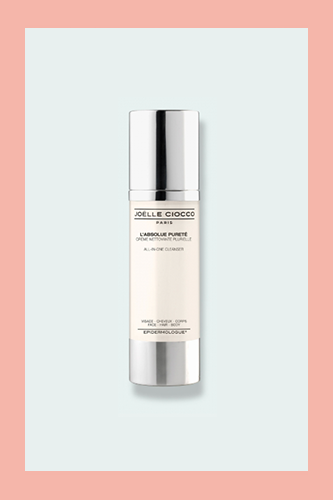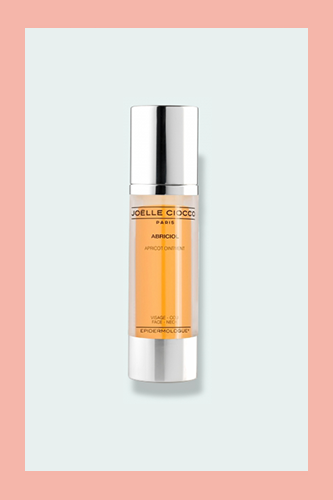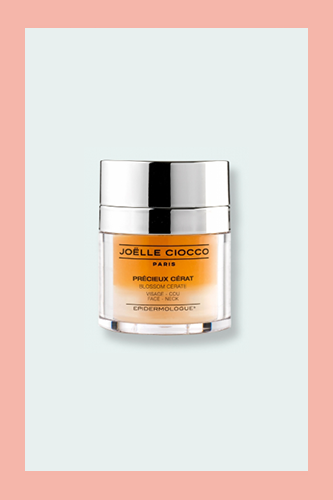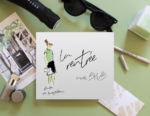Beauty Toaster’s Podcast with French Skincare Legend, Joëlle Ciocco with Beauty Toaster Podcast
Joëlle clues us into everything from facial massage techniques to skin science and lifestyle philosophies. J’adore!
BWB loves Chantal Soutarson’s podcast, Beauty Toaster, because she maintains such a strong network of young entrepreneurs, new brands, and wellness experts. While all of her interviews are in French, we have a special treat for our English-speaking audience: a transcript of Chantal’s groundbreaking interview with Parisian epidermologist, Joëlle Ciocco. This anti-aging guru clues us into everything from facial massage techniques and clean products to skin science and lifestyle philosophies. J’adore!

You are not a dermatologist or an aesthetician; you are an “epidermologist,” which is a specialization you have created yourself. Can you explain what an epidermologist is and tell us about your passion for skincare?
I am a biochemist by training and became interested in the skin very early on. The skin is just extraordinary! It is matter with a psychological component. Genetics, history, and present state form the identity of the skin. You have to take all three things into account in order to treat to skin properly. The genetics part cannot be changed. The history is the trajectory from birth until now. Then, there is the present: where you live, what line of work you are in, etc. This information gives me an idea of the “biodiversity” of the skin, and this is what I have been working on since the eighties.
Through the three main approaches (genetics, history and present), you can understand the biodiversity and microbiota.
Following this logic, it doesn’t really matter if the skin is “dry” or “oily,” as I discover more extraordinary things about each client. The skin has a natural coating – a sort of shield or membrane. Through the three main approaches (genetics, history and present), you can understand the biodiversity and microbiota in order to adapt a cosmetic preparation that complements without substituting.
At present, my role is to take care of the membrane, which is the fundamental natural element of the skin. If you are well-balanced, then you feel good – or as we say in French: “vous êtes bien dans votre peau” (you feel well in your own skin).
Can you talk about the protocols you have created for skincare?
Hygiene comes first. I have tested many cleansing methods and products. Respect of the microbiome is critical. It does not matter if you buy the best products, rather the ways you use them and clean your skin. You have to clean your skin twice––period! I have repeated this simple, yet essential, statement for over 40 years, and for a long time no one listened. Then one day, some marketing appeal involving two products instead of one probably came along, so the whole world started listening!
When you use sunscreen and then apply makeup, I have noticed you need to remove the makeup (step 1) and then you need to remove the sunscreen (step 2). A skin treatment will not work if you don’t work on a clean surface. No need to buy the most expensive serums if your skin is not ready to receive them. If you double-cleanse your skin every day and night for a minimum of three months, you are going to see a huge difference and rediscover the natural membrane.
Quality does matter.
In a way, cosmetics are like ingredients for cooking. In my lab, I prepare the ingredients and formulations with the help of my husband, who trained at the School of Cosmetology. It is a long process to get the formulation right, with lots of trials and errors. Quality does matter. You cannot get results if you use poor quality ingredients. Unfortunately, high quality formulations are only possible on a small scale, as it is not compatible with mass production. If I give my formulations to a vendor for industrial production, the product will have nothing to do with the one I have created. It would be packed with preservatives and co-emulsifying, co-stabilizing chemicals.
How many products have you created yourself?
About thirty!
And you are about to reformulate them?
Yes. It is a very difficult task. Because sensuality of texture and smell is so important for me, I want my products to smell good and feel good. You don’t want the product to start “turning” after three months. However, this is difficult to achieve with natural ingredients and only a few additives or chemical preservatives. I have to find a balance, but I don’t want to become too radical about it. For example, it would be ideal to use natural fragrances for all of the formulas, but it is not feasible, so we need some flexibility.
We have about 17 layers of epithelial cells, and with the aging process we lose them gradually.
Americans tend to do a lot, such as dermabrasion, laser treatments, exfoliating and peeling. Unfortunately, these instant results often cause long-term damage. With these procedures, the skin gets thinner and more fragile, so it doesn’t have a chance to regenerate. The skin loses its protective virtue, becomes inflamed, and puts you at risk of depigmentation. We have about 17 layers of epithelial cells, and with the aging process we lose them gradually. Think about what these aggressive treatments can do to these layers.
Also, I want to point out a very important fact that people tend to ignore: do not mix brands. If you are using a serum by X, you need to use the cream by X. Each brand has its own chemical formulation that your skin recognizes. When you start using a specific product, try to use it for at least three months.
Nowadays, the treatments are getting simpler.
All you really need is one or two good products and the right approach.
Yes, and less is more. I had the privilege to work with major brands and it is insane to see the number of products women use. All you really need is one or two good products and the right approach. When I say approach, I am also referring to the application gestures and the massaging motions used to increase the penetration of the product. You are not going to slap your face, right? It is a natural thing to know how to treat your face. The act of massaging your face is fundamental and you can certainly develop your own technique. Relaxing your face muscles and jaw and breathing deeply helps to work on the myofibers and decongest the lymph.
Thirty years ago, I designed two types of massage with phenomenal results of stunning facial contour. My “sculpture” massage focuses on the joints and muscles of the face, while my “buccal” massage focuses on the external/internal aspect of the muscles. It is a very unique experience worth trying at least once in your life—but it is not a one-time session. There are several stages, and only trained professionals with a good understanding of the anatomy can do it properly.
What are the factors that contribute to the aging of the skin?
Sun exposure. We know we need to protect our skin from the sun and a sunscreen only works if it has SPF 50 or more. It should also be purchased in a pharmacy, preferably over the counter. Pollution is also an important factor, which brings us back to hygiene and double-cleansing! Stress plays an important role, too – particularly new stress linked to technology and screens. There is even a condition we call “le penseur de Rodin” (Rodin’s The Thinker sculpture), which describes the way people hold their phones with the head tilted. If you maintain this position for a while, you do strain your muscles!
The main ways one can achieve well-being is by loving your skin, respecting it, and listening to your needs. Age gracefully! Do not forget the spiritual and psychological sides of well-being. Your state of mind always plays a bigger part than you think in your overall well-being.
Thank you to Beauty Toaster podcast for conducting the interview!
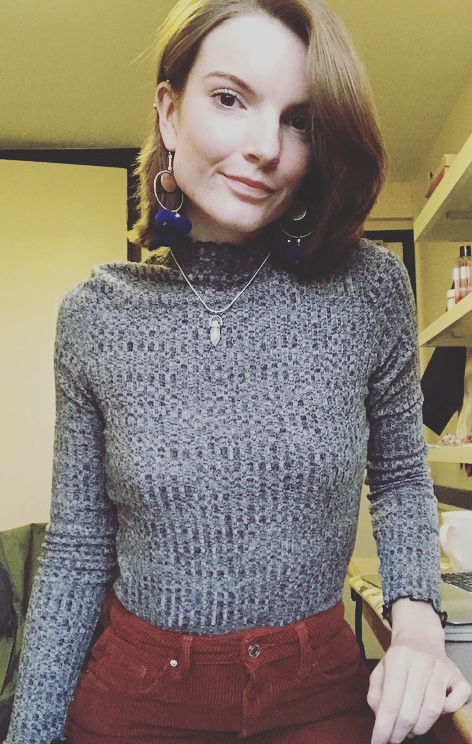
Teresa Deely is a graduate from Columbia University with majors in English and Creative Writing. She is a freelance writer and marketing assistant working for clients in the wellness, jewelry, creative, and sports industries. She believes that one’s skin is yet another canvas and vehicle for art, and has loved styling her hair and applying makeup from a young age. Spending much of her time in educating youth and leading enrichment programs for children, she is highly motivated in discovering new ways to care for herself and sharing them with others.



